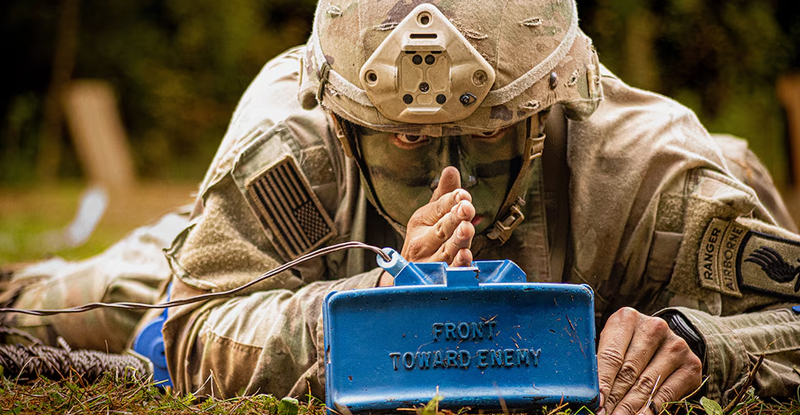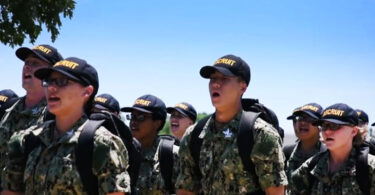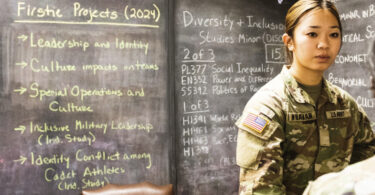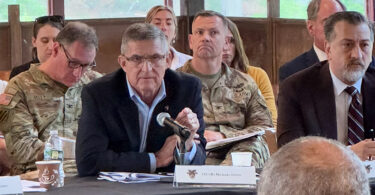By Major Donald E. Vandergriff, USA ret | From his Substack
As a lifelong advocate for military reform, I have spent decades critiquing the bureaucratic sclerosis that has plagued our armed forces, pushing for a return to the core principles of adaptability, meritocracy, and warfighting excellence.
My work—from *Path to Victory* to *Adopting Mission Command* (authored, edited and contributed to 11 books, as well as over a hundred articles)—has always centered on cultivating leaders who can think, decide, and act in the chaos of combat, free from the shackles of centralized control, political correctness, and risk-averse cultures.
So, when I listened to, then analyzed his transcript and deliver of Secretary of War Pete Hegseth’s address to our flag officers at Quantico on September 30, 2025, I was not just impressed—I was thrilled, fired up, and downright optimistic in a way I haven’t been since the early days of my reform efforts.
Let me tell you why this speech is a game-changer. Secretary Hegseth doesn’t mince words; he cuts straight to the heart of what has weakened our military over the past few decades.
He declares the end of the “Department of Defense” era—a name that always struck me as a euphemism for complacency—and restores the “Department of War” with a singular focus: warfighting, preparing for war, and winning it decisively. This echoes my long-held belief that our military must prioritize lethality and adaptability over defensive postures or nation-building distractions.
In my writings and talks, I’ve argued that true peace comes from strength, not from endless deployments or vague “stability operations.” Hegseth nails it with “peace through strength,” invoking George Washington and the warrior ethos. It’s a profound truth: we love peace, but we prepare for war because history demands it.
His “FAFO” quip? Spot on—our enemies should fear us, not see us as a paper tiger bogged down in social experiments.
What fires me up most is how this address directly supports and amplifies my reform work. For years, I’ve railed against the industrial-age personnel system that promotes conformists and box-checkers rather than bold, adaptive leaders. Hegseth’s mantra—”personnel is policy”—is music to my ears. He’s dismantling the quota-driven promotions based on race, gender, or “historic firsts,” insisting on merit-only advancements.
This aligns perfectly with my advocacy for a meritocracy where leaders are selected and trained to foster Mission Command: decentralized authority where NCOs and junior officers make decisions on the ground without micromanagement from above.
In *Raising the Bar,* I detailed how our evaluation systems breed risk aversion, turning officers into careerists who avoid tough calls to protect their records. They create and have sustained a culture of “Zero Defects” (coined under Secretary of Defense Robert McNamara when he took over from Ford Motor Company in 1961) which Secretary of War Hegseth mentioned.
Hegseth attacks this head-on, ending the “Zero Defect” culture, overhauling IG and EO processes to liberate commanders from frivolous complaints, and allowing earnest mistakes without career-ending repercussions.
Finally, we’re empowering NCOs—the backbone of our force—with the E-6 test, ensuring policies make their jobs easier, not more bureaucratic. This is the essence of adaptive leadership: trust your people, let them take risks, and build units that can improvise and win in uncertainty.
On training and standards, Hegseth’s directives are a direct validation of my calls for realistic, high-intensity preparation. I’ve long criticized how we’ve lowered physical and combat standards since the 1990s, especially post-2015, to accommodate diversity goals at the expense of lethality.
His return to male-level, gender-neutral standards for combat arms, mandatory PT tests, combat fitness assessments, and ending “fat troops” in formations? That’s common sense reform I’ve championed in my work on leader development.
War doesn’t care about feelings or inclusivity quotas; it cares about who can carry the ruck, fire the weapon, and drag a wounded comrade to safety. By applying the “1990 test”—reverting to pre-softening standards—and the Golden Rule (“would you want your child in this unit?”), he’s forcing a ruthless honesty that mirrors my emphasis on Outcomes-Based Learning or OBL.
No more PowerPoint death marches or mandatory distractions; more time on the range, in the motor pool, and building cohesion through tough, shared challenges. This will boost retention, as I’ve argued: warriors stay when they’re challenged and led well, not when they’re coddled or demoralized by low standards.
Moreover, Hegseth’s rejection of “woke” debris—DEI offices, identity politics, climate worship—clears the deck for the cultural shift I’ve advocated. In my books, I’ve shown how ideological intrusions erode unit trust and focus, turning the military into a social laboratory rather than a warfighting machine. By ripping out these distractions and restoring apolitical, constitutional leadership, he’s enabling the adaptive, innovative force we need against peer adversaries like China.
His nod to historical reformers like George Marshall and Henry Stimson reminds us that we’ve done this before—purging deadwood pre-WWII to win decisively (at the final After Action Review or AAR for the 1941 Louisiana Maneuver, Marshall announced the retirement of 500 officers who could not hack the intense field play). And his liberation of drill sergeants to instill discipline in basic training? That’s forging the resilient, thinking soldiers I’ve described in *Manning the Legions*, where fear and toughness build character without breaking the law.
This speech isn’t just rhetoric; it’s a blueprint for the reforms I’ve fought for. It supports my work by addressing the root causes: a bloated bureaucracy, top-heavy officer corps, misplaced priorities, an out of date Industrial-age personnel management system which leads to a culture to a failure to nurture adaptability.
With leaders like Hegseth and Chairman Caine at the helm, backed by President Trump, we’re on the cusp of a renaissance in American military power—one that’s agile, lethal, and true to our warrior heritage.
I’m thrilled because, after years of pushing against the tide, it feels like the tide is finally turning. To our warfighters: move out, draw fire, and let’s build the force that wins.
First published on his Substack
Books by the author:
Raising the Bar: Creating and Nurturing Adaptability to Deal with the Changing Face of War
The Path to Victory: America’s Army and the Revolution in Human Affairs
Slashing the Training Shackles: Empowering Commanders for Real Warfighting
By Major Donald E. Vandergriff, USA ret | From his Substack
Look, we’ve all seen it—the Army drowning in a sea of mandatory online drivel, ticking boxes for promotions while the troops sit idle in the motor pool, rusting like forgotten gear.
That’s the old Second Generation Warfare mindset: top-down dictates from the E-ring, force-feeding everyone the same bland compliance chowder, whether it’s another hour on cybersecurity quizzes or Privacy Act reruns.
t’s industrial-age nonsense, straight out of the World War I playbook, where leaders were micromanagers and soldiers were cogs in a machine. No wonder our units feel sluggish, disconnected from the fight.
But here’s the good news: the Department of War is finally swinging the axe. Secretary of War Hegseth’s push, we’re gutting this bureaucratic bloat to unleash the kind of agility that wins wars.
Mandatory training? Slashed from 27 soul-crushing courses to a lean 16 essentials. That’s not just paperwork relief—it’s a declaration of trust in our commanders to call the shots on what keeps their units lethal.
Why This Matters—Straight Talk on the Cuts:
- Dumping the Digital Deadweight: We’re torching about 350 hours of those promotion-tied online modules. No more staring at screens pretending to learn what you already know. Time saved goes straight to the range, the field, the fight—where it counts.
- Tailoring to the Mission, Not the Memo: Cybersecurity and Privacy Act refreshers? Relaxed or axed entirely. Commanders now get the discretion to gauge risks and prioritize. One battalion drilling urban ops in Mosul doesn’t need the same safety seminar as a stateside logistics crew. This is commander-led, unit-specific sharpening for the edge of combat.
- Consolidating the Clutter: Redundant stuff like Combat Lifesaver, Law of War, Code of Conduct, SERE, personnel recovery, and chunks of safety/occupational health training? Gone from the must-do list. What’s left gets bundled smartly, cutting the scattershot approach that dilutes focus.
- The Big Win: Lethality Over Liability: No more one-size-fits-all straitjacket. Leaders assess, adapt, and drill what builds warfighting muscle—maneuver, initiative, combined arms. This frees up bandwidth for the hard yards: live-fire iterations, tactical decision games, the stuff that forges adaptive fighters.
Bottom line? This isn’t reform for reform’s sake. It’s a pivot to what the force needs: empowered small-unit leaders making calls on the ground, not waiting for the next Pentagon PowerPoint. Units will surge toward mission readiness, with eyes locked on the enemy, not the calendar of compliance.
If we pull this off, we’ll see companies that think faster, hit harder, and outmaneuver anyone—because that’s how you dominate, not by checking boxes.
Why This Echoes My Fight for a Third Generation Army
I’ve spent decades hammering this drum—from my days as an armor officer to books like Path to Victory: America’s Army and the Revolution in Human Affairs and Adapting Mission Command, to name a couple—pushing the Army to shed its Second Generation skin.
That old culture?
It’s all about mass, attrition, and rigid hierarchies: centralized plans from on high, soldiers as interchangeable parts, training as a checklist to appease the risk-averse brass. It breeds compliance over competence, stifling the initiative that turns good units into great ones. Remember the Gulf War? We bludgeoned Iraq with superior tech and numbers, but it masked deeper flaws—slow adaptation, over-reliance on top-down control.
Enter Third Generation Warfare: the Boyd-Lind vision of decentralized, fluid ops where speed and surprise trump brute force.
Mission Command isn’t a buzzword; it’s the soul of it—commanders at every level trusted with intent, free to exploit opportunities without micromanagement. Maneuver Warfare follows: focus on disrupting the enemy’s decision cycle through bold, adaptive actions, not grinding them down.
This training purge aligns dead-on with that shift. By slashing mandates, we’re dismantling the 2GW bureaucracy that chokes initiative—those endless, irrelevant courses that reward box-tickers over battle-proven leaders.
Instead, we’re handing reins to company commanders to tailor training to their battlespace: more tactical exercises, less admin theater. It trusts the human element—the NCOs and lieutenants who know their troops’ gaps better than any DC desk jockey. This builds the agile, learning organizations I advocate: units that iterate fast, learn from failure, and maneuver like wolves, not dinosaurs.
Secretary of War Hegseth’s move is a milestone in the reform we’ve chased since the ‘90s experiments with OODA loops and maneuver doctrine. It won’t fix everything overnight—personnel systems still need gutting—but it’s a crack in the dam. Keep pushing, warriors; the future fights on your terms.
The Latest Memo
The most recent guidance on this comes from Secretary of War Hegseth’s memorandum titled “Reduction of Mandatory Training Requirements to Restore Mission Focus,” dated October 1, 2025. You can access it here: https://starrs.us/dow-memo-reduction-of-mandatory-training-requirements-to-restore-mission-focus/. It spells out the consolidations, eliminations, and commander flexibilities in detail, committing the Department of War to mission-first readiness.
USNI article On New Guidance: Pentagon Issues New Guidance on Physical Fitness, Grooming Standards Following Quantico Speech . . . . (read the rest)








Leave a Comment